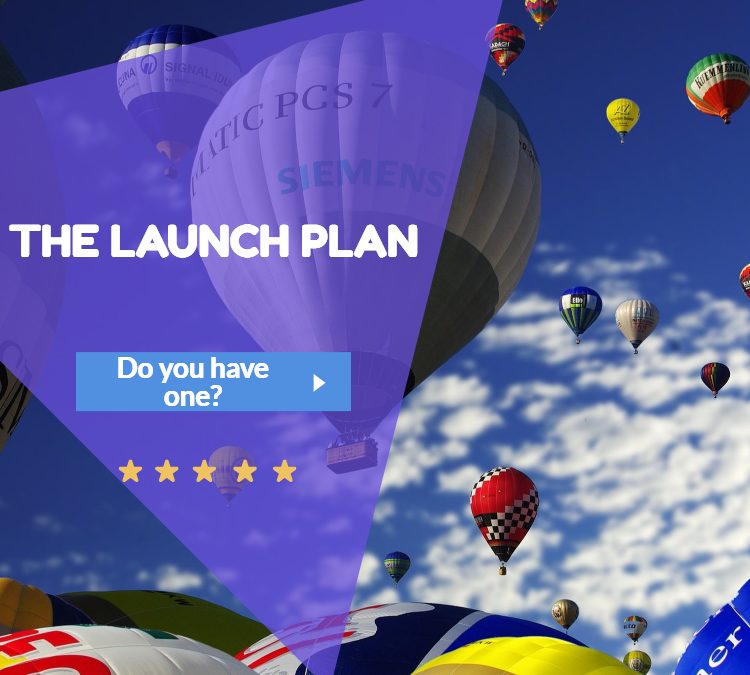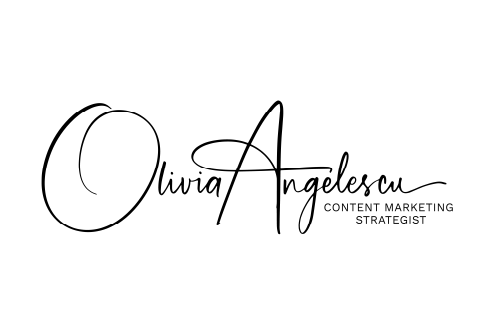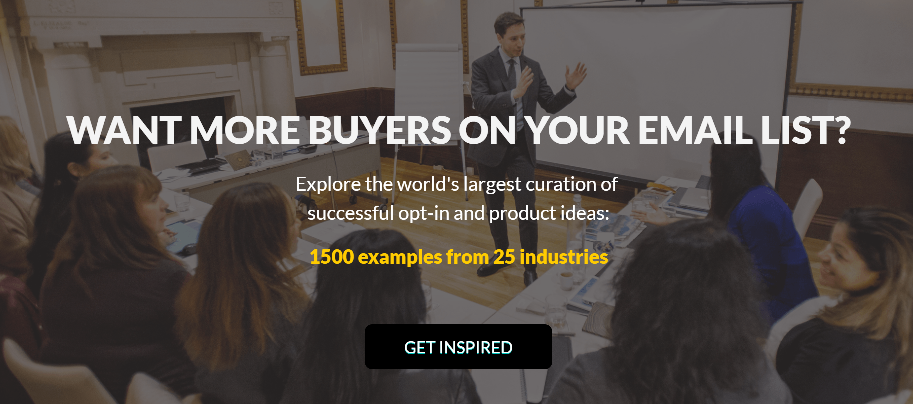
The Launch Strategy- Do You Have One?
Do the words LAUNCH STRATEGY give you shivers? Bear with me, I promise that by the end of this (long) post, things will look a lot brighter.
This is what we will cover:
- Why you need a strategy and a plan?
- The difference between a strategy and a plan.
- The super benefits of having a launch strategy and plan in place.
1. My own launching story
Back in January 2015, I was busy as a bee. I was a wife and a mother of a 5-years old; I was working +60 hours every week and, during weekends, I was cooking, cleaning my house and doing laundry. Then, one sweet day, I found out that I was pregnant and then spent the next four months throwing up every other hour and dying for a full day of rest.
But I couldn’t take a day off. Oh, no. I had important projects to finish, millions to make for all my important clients (to keep them and my boss happy). This is what it takes if you want to be a senior management strategist for five different Fortune100 companies at the same time. Basically you must play all your cards right, otherwise you are screwed.
Thinking about my situation, I suddenly remembered all these expensive online marketing courses I had signed up for, hoping one day I will have my own freedom business.
You see, I don’t drink or smoke. I don’t collect brand bags or designer shoes. I hate shopping malls. I have never been to a spa in my life. I collect online courses. This is my thing. And I know that some of you will resonate with me here. 😊
I immediately knew it: IT WAS NOW OR NEVER.
I have recently read that at 35 years old people begin to hate their jobs. I don’t know if this applies to everyone (I hope not, this would be weird and sad at the same time), but it sure applied to me.
I hated my job not because it was boring, oh no! Quite the contrary! The projects I managed taught me something new almost every day. And sometimes, during a good “office politics” scene, I was feeling like watching a good psychological movie (but without the nachos and salsa). I swear.
I hated my job because it kept me from living my life the way I wanted to.
I wanted to focus more on my family, I wanted to have the time to know my kids. Not know, but KNOW them. I couldn’t do this while working +60 hours every week and taking only two weeks of holiday every year.
I wanted to be able to take time off whenever I needed it, without getting “the look” from my manager. Something had to give.
That morning, I made myself a promise: I was going to launch an online business and replace my corporate income while working from home.
But boy, have I mentioned being busy and pregnant? Well, if I was going to do this, I needed a solid plan. Luckily, I had previously prepared complicated launch plan for hundreds of small and big companies, so it was not new territory for me.
That day I secured my URL and over that weekend I stayed in bed and launched my DIY (ugly looking) website (with lots of throwing up pauses, of course, not because of the launch anxiety but the pregnancy).
WHY AM I SHARING THIS?
I am telling you all this because I have talked to lots of people lately who were just starting an online business (selling a service, a physical product or a digital product) and they hope just to hit publish and then watch those sales come in.
Nothing wrong with hoping, of course. The problem was that they had no plan at all. Unless, spending your mortgage on Facebook ads without knowing what to watch for, is a plan. This never works. Except if you were born the luckiest person on this earth, in which case you don’t need to read this, just go and enjoy your life (btw, I hate you). 🙂
I was surprised at first. But then I got it. It was not them; it was all the “overnight gurus” that make you believe this is possible. You know, that “How I became a millionaire in 2 months while taking fake selfies and spending all my time on Instagram” bullshit.
The internet gets more and more crowded and everyone talks about copywriting and sales pages and landing pages and ads and traffic and everything else. All those are very important things, yes, but not by themselves.
Who is talking about starting with a strategy? Only a few people. Wanna know why? Because strategy is not sexy, is not seducing. The word “strategy” will just make you want to go back to your bed and take a long nap or binge watch “Suits” on Netflix. Yes, I agree, the series will not be the same after Meghan Markle moved in with Prince Harry, but please, let’s get back to the strategy.
The thing is that, if you don’t know where you want to go, you will never get there.
You MUST have a clear idea in mind about what your overall objective is. And for this you only need to answer these simple questions:
1. What is my overall sales target for this year?
How much money do you need to make in 2018 so that you feel comfortable, motivated and convinced that this online business thing will work for you? Write this number down on a piece of paper and put in where you can see it every day.
2. What is my sales target for this particular launch?
You will most likely have a few different launches (or re-launches) in 2018 to reach your final sales goal. Think about your first (next) launch and set a launch sales target. If this is your first launch and you don’t have a big audience and a big budget to gather one quickly, then don’t aim too high.
For my first launch, I projected a sales target of 1,000$. I only had close to 100 people on my list and I was too scared to invest in paid ads. I decided to start small and see how it goes.
Choose a target that seems feasible without making you nervous. If this is not your first launch, then use your previous experience to set your next launch sales target.
3. What is the price of my product/service?
Depending on your product and your market, this could range from a 10$ e-book to a 1000$ course or coaching package. Or even more, of course. If you want to understand everything about pricing psychology I recommend listening to this material: Ramit Sethi talks about how to set your prices
4. What is the estimated conversion rate?
The conversion rate is the percentage of people who see your sales page and purchase your product or service. You can easily calculate it by dividing the number of sales by the total sales page visits.
Now, all the gurus are telling you that you should expect a conversion rate of 1-2%. I will contradict them. There is no standard rate. It all depends on different factors like the engagement of your list and on how persuasive your launch assets are + how useful your product is for them, of course. I had launches where my conversion rate was +30%.
5. How many subscribers do I need?
Here we will calculate the exact number of subscribers you need to reach your desired launch sales goal. The magical launch formula that will lead all your actions from now on is:
number of subscribers = sales target */ (conversion rate* price)
Let’s take an example here. Let’s say I have a sales target of 1,000$ for my launch. Because I will be clever and persuasive with my copywriting, I estimate a conversion rate of 10%. The price of my product is 100$.
Based on the Magic Launch Formula, the number of subscribers I need to reach my launch goal is:
1000 / (0.10*100) = 100
This means that I only need 100 targeted subscribers to make 1,000$ from my launch.
I bet you can have those subscribers in one week. I show you exactly how in other posts here, on my blog. So if you are just starting out and have list building anxiety, stick around.
Now here you can find a very useful tool, you can use to set your income goal for one year, based on what products you plan to launch, how many launches you want to run and your prices. Input your information below, download and save this tool on your computer.
Download yours now!

This income simulator is something basic that all the big companies are using (of course, they have these scary spreadsheets with lots of information prepared by those serious finance people and consultants – I was one of them), but the essence is what you see here.
Play with this tool, visualize the possibilities and internalize it. Once you see the numbers, everything will seem less scary and a whole lot more motivating, I promise.
For example:
In 2018 I want to make 15,000$. I can sell:
– a 50$ product (a small email course) to 60 people * 5 times.
– a 100$ product to 30 people, every 3 months.
– a 300$ product to only 5 people * 10 times.
Now imagine if in 2019 you will have all those three products ready and you will launch them all. That’s a total yearly revenue of almost 50,000$.
You see? All you need is a valuable product that efficiently solves a burning need and then you’ll find 5-60 people to sell it to. I am sure you can find those people! Everybody can.
From my experience:
- I added 350 subscribers from 2 quality guest post, so why can’t you?
- I added 370 new subscribers in 2 days with promoting a very valuable opt-in in 3 Facebook groups, why can’t you?
- I used cheap Facebook ads (10$/day) last December (a crazy month with high ads cost for marketers) to add 150 subscribers in 3 days.
This is what your strategy should look like. Now let’s talk about your plan.
The Plan = the exact steps to take to implement your strategy (reach your yearly objectives).
To draft your plan you will answer the following questions:
- What will I sell?
- At what price points?
- When will I launch and for how many days?
- How will I launch: via an email sequence, webinar, challenge, free email course?
- How many subscribers do I need? How I will add them: opt-in (one or more), marketing plan for promoting my opt-in.
- Individual launch plan: what do I need, by when, what steps I need to take and when?
Then EXECUTE the shit out of your plan.
Wow, that was a long email, with lots of information. If you made it so far, perfect! You know how to start planning all your steps to take and reach your financial objectives for this year.
I am wondering: was this useful for you? What is the one thing you walked away after reading this? Let me know in the comments below.
Download this free Launch Sales Simulator tool, play with it and enjoy its magical motivational superpower. Suddenly, your next launch doesn’t seem too scary, right? 🙂




